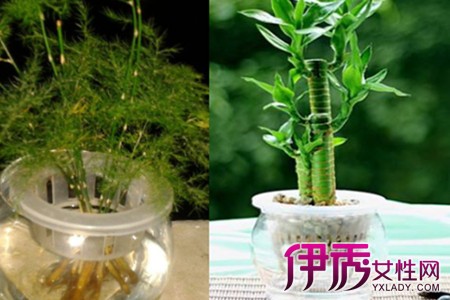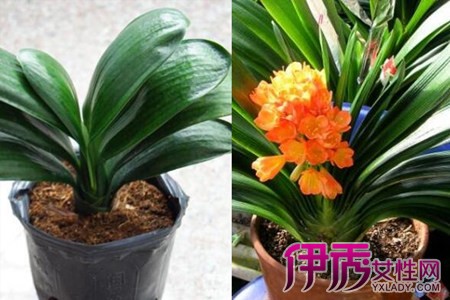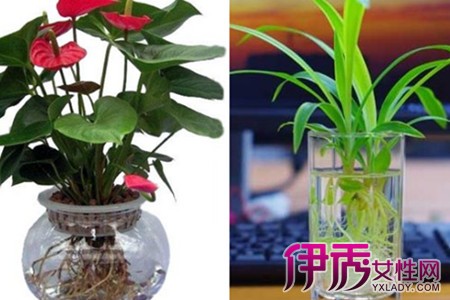How often do hydroponic plants change water correctly to grow beautiful flowers

The most important job of aquaculture plants is to change water. Some friends always think that the water in the container is quite clean and does not need to be replaced. In fact, this idea is wrong. Because for hydroponic plants, water is the only way for them to absorb nutrients. If the supply of nutrients is insufficient, they will appear morbid.
Hydroponic plants change water at different times in each season, usually when the temperature warms up in spring when hydroponic plants need more nutrition. You need to change the water every day, not only to change the water, but also to add nutrient solution to the water. In the case of adequate nutrition, they can grow up a lot in spring, and if the water is not changed in time, they will stagnate due to lack of nutrition.
Hydroponic plants have a greater demand for water in summer. They not only need to change water every day, but also have to add water at noon. Because hot water evaporates quickly in summer, hydroponic plants already absorb a lot of water, coupled with natural evaporation, plants may not have enough water if they do not add water. When the water level is below where the flower root can reach, the flower will wilt.
In autumn, hydroponic plants absorb less water and can change water every two days. Because there are many Rain Water in most areas in autumn, the climate in other areas will also turn cooler. In this case, hydroponic plants will not grow too fast, so there is no need to change water every day. However, the time to change the water should not be more than three days, because there will be no nutrients in the water for more than 48 hours.
In winter, most hydroponic plants will go into dormancy, and of course, there are a few hydroponic plants that continue to grow without dormancy when it is especially warm at home. If it is a dormant hydroponic plant, you can stop putting all nutrients and change the water once every three days. If it is not dormant hydroponic plants, you can change water every two days, but nutrient solution is not recommended, because even if not dormant hydroponic plants will not grow too fast in winter.
How often do hydroponic plants change water? How to change water for hydroponic plants? Hydroponic flowers are full of fragrance above and fish swimming below, which is hygienic, environmentally friendly and convenient, so hydroponic flowers are also known as "lazy flowers". Through the implementation of original industrial modern biological improvement technology, it makes the flowers that originally adapted to the terrestrial environment quickly adapt to the aquatic environment through short-term scientific domestication, improvement and cultivation. Nowadays, most people will cultivate several green plants at home or on their desks. for hydroponic plants, water is an important living environment, and frequent water washing is particularly important to ensure their good growth. The importance of changing water for hydroponic plants 1. The conditions for plant growth are mainly water, nutrients and air. The water and nutrients of hydroponic plants can absolutely guarantee their needs, and the oxygen content of oxygen in water will gradually decrease with the growth of plants. When reduced to a certain extent, it will affect the growth of flowers due to hypoxia, so it is necessary to change water to supplement new oxygen. 2. The roots of hydroponic plants grow in water, on the one hand, absorb nutrients in the water, on the other hand, they discharge some organic matter into the water, there are also wastes or toxins, and deposit in the water. There is no bottom hole in the hydroponic container, and these organic substances, wastes or toxins are all deposited in the water and are easily inhaled into the body by plants again, resulting in a vicious circle of repeated absorption, excretion, re-absorption and re-excretion. it is very unfavorable to the normal growth and physiological function of flowers. 3. Hydroponic flower plants often apply nutrient fertilizer to the water, except that some mineral elements are absorbed by the root system, the rest remain in the water, when the residual material reaches a certain amount, it will also do some harm to the flowers. 4. the roots of hydroponic flowers growing in water for a long time will produce a kind of mucus, which will not only affect the absorption of nutrients by flower roots, but also pollute the water. How to change water for hydroponic plants 1. Time for changing water: generally, the appropriate time for changing water is 5 Mel for 7 days. But the change of water depends on the season. Flowers that have just been hydroponically cultivated require a change of water once every two days. The summer plant growth is exuberant, the temperature is high, the water is easy to deteriorate, the time should be shortened. In winter, most of the plants are semi-dormant or dormant, the temperature is lower, and the interval between changing water can be longer. Generally speaking, the interval between changing water is shorter, which is beneficial to plant growth. 2. Cleaning of roots and containers: when changing water, the roots should be cleaned, the mucus on the roots can be washed off with clean water, and some of the rotten roots and the old roots that have lost their absorptive capacity can be cut off. After using the container for a period of time, the wall will adhere to some sediment, and it is also easy to grow moss, which should also be cleaned when changing water. 3. Depth of water: when hydroponic cultivation of flowers, roots are often immersed in water, but this method is inappropriate. It is best not to add too much water. Most of the roots are soaked in water, and a small amount of roots are exposed in the air. In this way, the roots can absorb dissolved oxygen in water and oxygen from the air. Through the detailed introduction of this article, I hope you can gain something! Thank you for your support and attention to Zuihua Network! What are the hydroponic plants? how to grow hydroponic plants?
Hydroponic plant culture is a common method of plant culture in modern homes, which is different from the traditional method of raising plants in the soil, but breeding plants in water and adding the nutrient solution needed by plants. Hydroponic plants have better ornamental, now there are several goldfish in hydroponic plants, which have better decorative effect, so what are hydroponic plants? The following will introduce you one by one.
[what are the hydroponic plants?]
The plants that can be hydroponically cultured are tortoise-backed bamboo, Milan, gentleman orchid, camellia, rose, jasmine, rhododendron, evergreen, violet, Phalaenopsis, inverted golden bell, five-needle pine, rubber banyan, Brazilian iron, begonia, ferns, palms, etc., as well as various foliage plants, such as tufted taro, silver-bract taro, fire crane flower, Guangdong hanging orchid, Yinbian evergreen.
There are more than a hundred kinds of lotus palm, hibiscus palm and other kinds of orchid, Paphiopedilum, crab claw orchid, rich bamboo, pineapple, silver leaf chrysanthemum, Brazilian wood, ivy, colored leaf grass and so on. Basically, plants that can be planted in the soil can be hydroponically cultivated, but a small number of plants that prefer a dry environment are not suitable for hydroponics.
In addition, plants need sunlight, so when cultivating indoor hydroponic plants, we should pay attention to choosing the growth environment of hydroponic plants according to different plant species.
[how to grow hydroponic plants]
1. Attach importance to the stage
From the perspective of plant growth cycle, hydroponic flower culture technology has two technical stages that need to be paid attention to: one is the cultivation stage of seedlings, that is, the hydroponic propagation process, and the other is the nursing stage of plant finished products. that is, the hydroponic culture process of individual operation after the success of hydroponic culture. Through the maintenance of these two stages, following the correct rules of hydroponics, and paying attention to the problems that need to be paid attention to in the process of breeding, we can see beautiful and elegant, clean and healthy hydroponic flowers.
2. Soilless domestication
(1) planting of large seedlings: tap around the flowerpot with your hand and remove the whole plant from the pot after the soil is loosened. Gently remove the soil by hand, or rinse directly with water; then cut the planting basket. If the head of the plant is too large and the aperture of the planting basket is too small, the hole of the planting basket needs to be enlarged to facilitate planting. After that, add the nutrient solution to the container, insert the roots of the large seedlings from the planting basket, and then fix them with sponges or stones to avoid root damage.
(2) small seedling planting: small seedling planting is much simpler than large seedling planting. Generally, the seedlings taken are no more than 8 centimeters, and the seedlings are taken out directly from the basin, and the roots can be washed a little in the water, paying attention not to accidentally hurt the roots; then begin to plant the seedlings and insert the roots directly from the holes in the planting basket. just fix it with a stone.
(3) the blending of nutrient solution: with regard to the blending of hydroponic flower nutrient solution, it can be purchased and prepared at the chemical reagent store according to the formula provided by the relevant data, and urea and other fertilizers can also be used in hydroponic flowers according to the local fertilizer source. after gaining experience, the total concentration of other fertilizers should be controlled at 0. 1% Murray 0. 2%.
(4) the main points of transplanting flowers: the water level of hydroponic flowers must be controlled, which should be low rather than high. Keep plant roots in water, or even less, for a month of adaptation, and then gradually increase the amount of water later. In the process of hydroponic culture, when water droplets appear at the leaf tip of flowers, the water level of hydroponic culture should be reduced appropriately, and attention should be paid to avoid direct sunlight when hydroponic culture is just carried out.
3. Soilless trough planting
(1) the establishment and method of hydroponic nursery bed: the hydroponic seedling bed should not leak, and it is usually made of concrete or brick with a width of about 1. 2Murray 1. 5 meters, the length depends on the scale, it is best to build a stepped seedbed, which is conducive to the flow of water and maintain the oxygen content in the water. An electric hot line for heating the water supply is laid at the bottom of the bed to stabilize the water temperature at 21 ℃. Water reproduction can be carried out all the year round, and the water temperature should be controlled at about 25 ℃, not too high or too low. When hydroponics, plant seedlings should be inserted shallowly, water or nutrient solution in the bed 5ml 8cm. However, in order to keep the seedlings stable, you can put clean sand at the bottom, drill holes in the styrofoam board, or set up a grid on the water surface to insert the plant seedlings into the water. In the process of rooting, a pump is used to pump regularly every day to keep enough oxygen in the water.
(2) preparation of nutrient solution commonly used in hydroponic propagation: hydropropagation uses water as the medium, and there are no nutrient elements needed for plant growth in the water, so it is necessary to prepare a certain nutrient solution for plant rooting and seedling growth before transplanting. The selection of nutrient solution formula is the key to the success of hydroponics, and the nutrient solution formulations required by different plants are different, so we must prepare the nutrient solution according to the needs of plants in water culture.
[recommended for common hydroponic plants]
Water-raised plants one (clear water hibiscus):
Lotus has always been a clear water hibiscus, lotus has always been a representative of hydroponic plants. There are many reasons why lotus is loved by people. For example, the moral is very auspicious, and lotus is homophonic with "harmony". Wish the family happiness and happiness for ten thousand years. The lotus is also a symbol of love, because in the early Tang Dynasty, Wang Bo's "picking Lotus Song" shows the steadfastness of love between men and women.
Hydroponic plant II (peacock hyacinth in water):
There is an obvious bright yellow spot in the center of the petals of Eichhornia crassipes, which is shaped like Phoenix eyes and also like the flower spot at the end of the peacock feather, which is very dazzling and beautiful. Like a peacock in the water, its posture is elegant and noble. Eichhornia crassipes like to grow on sunny, calm water surfaces, or wet and fertile slopes, so they are good aquaculture plants. Therefore, Eichhornia crassipes has the advantages of high ornamental value and convenient breeding.
Water plants III (elegant water lilies):
Water lilies, also known as meridian lilies and water celery flowers, are perennial aquatic plants. Water lilies are precious flowers in aquatic flowers. The appearance is similar to that of the lotus, except that the leaves and flowers of the lotus protrude to the surface, while the leaves and flowers of the water lily float on the surface. Water lilies are known as "sleeping beauties in flowers" because they roll day and night. Water lilies have a wide range of uses, such as food, tea, cut flowers, medicine and so on. Its ornamental value is also very high, for so many advantages of hydroponic plants, you are moved.
If you want to know more about it, you can continue to follow the No.1 Home Network.
- Prev

Master the seed planting method of Cymbidium, the flowering period is more beautiful and luxuriant
It can be said that the gentleman orchid is a kind of flower that is more difficult to breed, and many people say it is very difficult to breed. But orchids are very beautiful when they bloom, so many people want to raise orchids at home. The editor will share the method of planting magnolia today.
- Next

How to cultivate hydroponic plants to be more beautiful and make aquatic elves grow stronger and stronger
Hydroponic plants are popular with many flower lovers because they can save space and are highly ornamental. But some friends find that the hydroponic plants at home look more and more unhealthy, and these friends want to know if they are raising them in the wrong way.
Related
- Fuxing push coffee new agricultural production and marketing class: lack of small-scale processing plants
- Jujube rice field leisure farm deep ploughing Yilan for five years to create a space for organic food and play
- Nongyu Farm-A trial of organic papaya for brave women with advanced technology
- Four points for attention in the prevention and control of diseases and insect pests of edible fungi
- How to add nutrient solution to Edible Fungi
- Is there any good way to control edible fungus mites?
- Open Inoculation Technology of Edible Fungi
- Is there any clever way to use fertilizer for edible fungus in winter?
- What agents are used to kill the pathogens of edible fungi in the mushroom shed?
- Rapid drying of Edible Fungi

